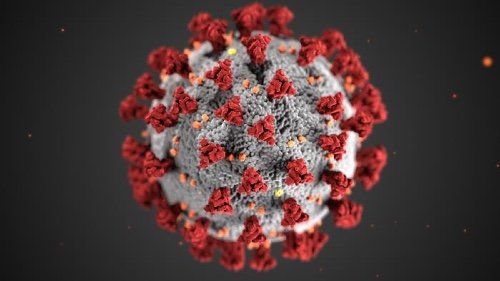Online Training Teaches Ob/Gyns to Identify COVID-19 Via Lung Ultrasound
After 2.5 hours, providers could successfully identify lungs with pathological patterns indicative of viral infection.

Obstetrician-gynecologists (ob/gyns) can learn the skills needed to identify COVID-19 on lung ultrasound via an online course - even if they don’t have prior lung ultrasound experience new research has found.
According to a small study of 11 providers, published in Ultrasound in Obstetrics & Gynaecology, investigators, led by Danilo Buonsenso, Ph.D., and Francesca Moro, Ph.D., from Rome’s Fondazione Policlinico Universitario Agostino Gemelli, administered a 2.5-hours online course to ob/gyns who had previous experience performing prenatal ultrasounds, but scant lung ultrasound knowledge. After taking the course, the providers were able to distinguish between normal findings and those that might indicate a patient had a COVID-19 infection.
“We believe that our course represents one possible model of implementing lung ultrasound education, and it might be a useful launchpad for gynecologists/obstetricians involved in the management of COVID-19 pregnant patients,” the team wrote.
Two pneumologists and a pediatrician - who all had more than a decade of lung ultrasound experience - designed the online course. After completing it, ob/gyn providers were able to identify B-lines, subpleural consolidations, a thickened or patchy pleural line, and other characteristic signs of possible infection.
The course includes a 15-minute pre-test with 10 ultrasound video clips of healthy, normal lungs, as well as ones with ones with pathological findings. Participants evaluate the lungs, indicating these possible assessments:
- Normal
- Clear and distinct vertical artifacts with small pleural alterations
- Broken pleural line and small consolidations
- White lung without subpleural consolidation evidence
- White lung with subpleural consolidation evidence
- Pattern not compatible, vast consolidations
- Pattern not compatible, pleural effusions
Participants also completed a two-hour theoretical course of lung ultrasound education, as well as a 15-minute post-test that included the same 10 ultrasound clips.
According to the pre-test and post-test results, the average number of correct answers provided by course participants rose from 6 to 9 out of 10. Eight ob/gyns correctly assessed all cases presented in the test.
Despite the small number of study participants, investigators said, the results indicate that ob/gyns can play a role in helping to identify and manage pregnant patients who also have COVID-19 infection.
“Our preliminary experience show that a fast teaching program was sufficient to provide appropriate theoretical skills to recognize specific lung ultrasound patterns,” they said.
New AI-Enabled Portable Ultrasound May Facilitate 50 Percent Reduction in Cardiac Imaging Scan Time
March 28th 2025Artificial intelligence (AI)-powered measurement capabilities provide key features with the Compact Ultrasound 5500CV device, which was unveiled at the American College of Cardiology (ACC) conference.
The Reading Room: Racial and Ethnic Minorities, Cancer Screenings, and COVID-19
November 3rd 2020In this podcast episode, Dr. Shalom Kalnicki, from Montefiore and Albert Einstein College of Medicine, discusses the disparities minority patients face with cancer screenings and what can be done to increase access during the pandemic.
Can Ultrasound-Based Radiomics Enhance Differentiation of HER2 Breast Cancer?
March 11th 2025Multicenter research revealed that a combined model of clinical factors and ultrasound-based radiomics exhibited greater than a 23 percent higher per patient-level accuracy rate for identifying HER2 breast cancer than a clinical model.